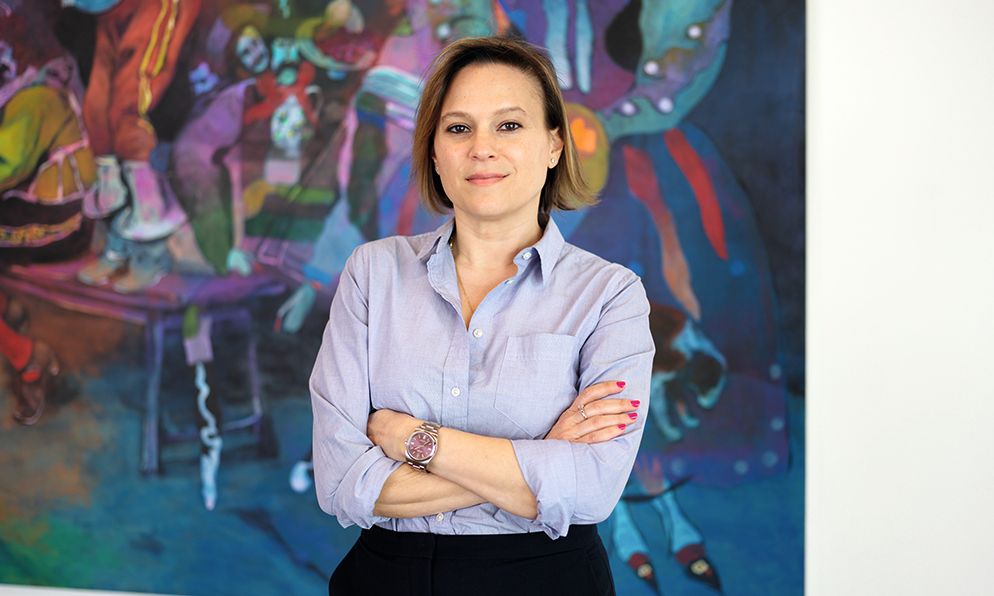New York calling: Anat Ebgi, who already has three spaces in Los Angeles, is expanding into Manhattan
Matthew Kroening; courtesy Anat Ebgi Gallery
The prevailing wisdom holds that it is a dangerous time to be a modestly sized gallery in New York City. This message seemed to manifest in the recent closure of three downtown spaces—JTT, Foxy Production and Queer Thoughts—each of which had earned more than a decade of acclaim for championing innovative emerging artists who often went on to greater renown. Amid stubborn inflation, high interest rates and intensifying geopolitical ruptures, the art market slowdown of 2023 suggests that now is hardly the moment for dealers with limited resources to expand.
Yet multiple veteran mid-market and mid-major galleries in the US are doing exactly that in Manhattan. Their plans call into question both this autumn’s dominant art market narrative and long-standing assumptions about the inner dynamics of the private art trade.
The gallerist Anat Ebgi recently announced her first foray into New York City: a 5,000 sq. ft space at 372 Broadway in Tribeca whose soft opening took place on 2 November. Ebgi launched her eponymous gallery in Los Angeles in 2008 after completing her master’s degree in New York at Bard College’s Center for Curatorial Studies. She has since expanded to three locations across LA. Her newest and largest space is both a personal homecoming and an opportunity for her programme, which now includes the embroidery specialist Jordan Nassar, the fast-rising video- and photo-based artist Jibade-Khalil Huffman and the estate of Tina Girouard.
“Returning to New York felt like a logical next step for the gallery and for our artists, many of whom have not exhibited in New York,” Ebgi tells The Art Newspaper. Finding the space in Tribeca “felt meant to be”, she says, as the expansion caps several years of planning and aligns with the gallery’s growth trajectory: “It happened so organically and ticked all the boxes for what we were looking for.”
Having opened her first space during the 2008 recession and additional locations during the Covid-19 pandemic, Ebgi is no stranger to navigating market volatility. She notes that periods of high demand, oversaturation and speculation in the art market can be equally if not more destabilising for gallerists, adding that there is “always uncertainty”.
“Every gallery has an individual path and different reasons for why they do things,” she says. “There have been contractions and expansions, but the circumstances are so personal from gallery to gallery, it’s hard to determine with broad brushstrokes what’s happening in the market.”
Gallerist Candice Madey echoes these sentiments in discussing her recently announced expansion to 1 Freeman Alley, a new space across the street from her flagship gallery at 1 Rivington Street in New York’s Lower East Side. “It happened organically,” Madey tells The Art Newspaper, explaining that she had not been planning to expand until she discovered the property and started to “immediately visualise what our artists could do in this space”. Her programme now includes Rochelle Feinstein (co-represented in a unique arrangement with five other women dealers), the photographer and video artist Carrie Schneider and the estate of the cross-disciplinary conceptualist Darrel Ellis.
Although Madey’s gallery has enjoyed steady growth in recent years, her commitment to the new space has little to do with the most typical reasons dealers tend to size up. “This expansion wasn’t really about reaching new markets or increasing our footprint,” she says. “It was more about having a different kind of space and more room for exhibitions that we’ve been limited from doing in the existing second-floor space.”
Whereas 1 Rivington offers an intimate setting suitable for smaller-scale works, the higher ceilings of the former carriage-house space at 1 Freeman Alley are better suited to hosting salon series and presenting large-scale works. Neither of these endeavours chimes with the conventional wisdom about what middle-class dealers should be prioritising this autumn. But like Ebgi, Madey is undeterred by the shifting tides of the broader art market.
“Right now there’s a tremendous amount of economic uncertainty in general for a multitude of economic and political reasons,” she says. “But I think even with this expansion, we remain nimble. Opening a space across the street expands our programming potential without upending our budgets and our trajectory.”
“When you’ve been doing this for long enough, you just sort of plan for the volatility,” she adds.

